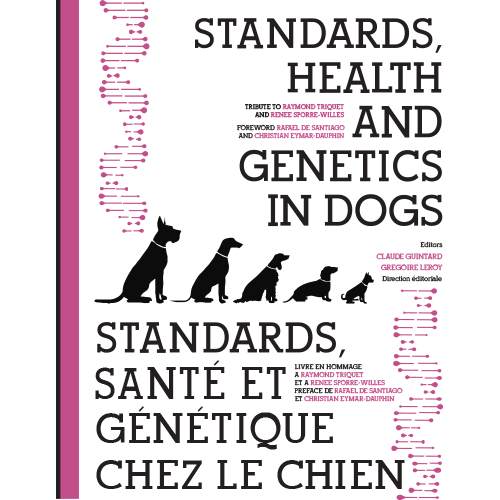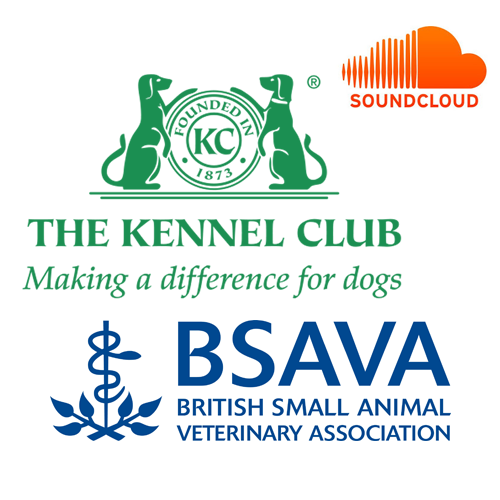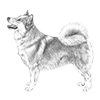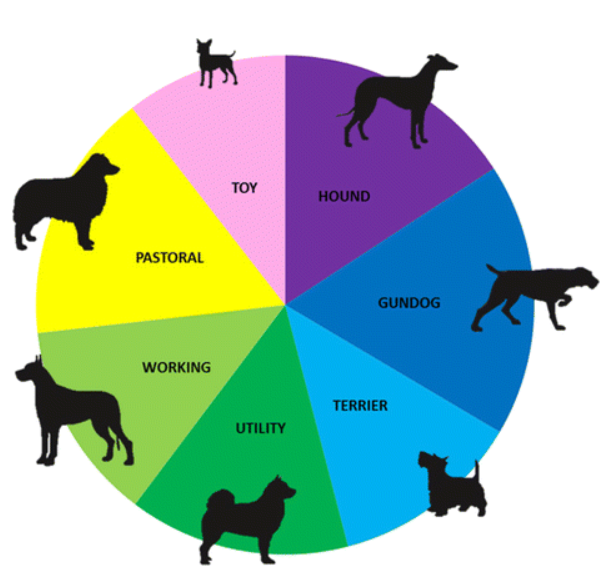Population | Breed Level
This section addresses considerations at the breed and population level used in breeding decisions.
8 articles in this category
-
 A PRE-PRESENTATION article (in French) written by Claude Guintard & Grégoire Leroy is available... http://documents.irevues.inist.fr/bitstream/handle/2042/62336/11_presentations.pdf?sequence=1 Excerpts (translated using google translate)... CHAPTER I - The Standards "The drafting of the breed standards, keystone of the breeding canine, is a delicate exercise. Every standard must overcome a contradiction. The breed standards, guardians of characteristics of the breed,
A PRE-PRESENTATION article (in French) written by Claude Guintard & Grégoire Leroy is available... http://documents.irevues.inist.fr/bitstream/handle/2042/62336/11_presentations.pdf?sequence=1 Excerpts (translated using google translate)... CHAPTER I - The Standards "The drafting of the breed standards, keystone of the breeding canine, is a delicate exercise. Every standard must overcome a contradiction. The breed standards, guardians of characteristics of the breed,- The book, Standards, Santé et Génétique chez le Chien / Standards, Health and Genetics in the Dog was created by the Société Centrale Canine (SCC) in collaboration with the Fédération Cynophile Internationale (F.C.I.) and the Swedish Kennel Club (SKK). Under the direction of Claude Guintard and Grégoire Leroy, the publication was presented as a tribute to Mrs. René Sporre-Willes and Mr. Raymond Triquet, longstanding chairs of the F.C.I.'s the Standards Commission, at the Third IPFD Dog Health Workshop held in Paris from April 21 to 23, 2017. Standards, Santé et Génétique chez le Chien / Standards, Health and Genetics in the Dog presents information from the world of dogs which can be applied in service to canine and human health and well-being. This work includes contributions by veterinarians, researchers, and dog-theorists who offer insights into the development of breed standards as well as the incredible advances in molecular genetics. We at DogWellNet are delighted to be able to present the content from this book's 396 pages which includes 20 texts in English and in French distributed in two large chapters. The book's Table of Contents (TOC-Standards, Santé et Génétique chez le Chien-Standards, Health and Genetics in Dogs) is available to DWN guests as well as DWN members. DWN members will have access to all of the book's texts available in DWN's Downloads section. Over the coming year we will feature texts from the book in DWN articles which will be accessible to DWN's members as well as guests. We would like to thank the book's producers and authors for their exceptional knowledge, extraordinary insights and for their willingness to share their expertise with people who are a part of the international dog community.
- 0 comments
- 2,486 views
-

- Tom Lewis from The Kennel Club discusses 4 forces that impact dog populations/pedigreed dog breeds: mutation, selection, loss of genetic diversity and out crossing.
- 0 comments
- 1,449 views
-
This article addresses the aspect of population size on healthy breeding in dog breeds, genetic disorders and selection. Excerpts... "In both large- and small-population breeds, genetic diversity can be lost if breeders do not utilize dogs from the breadth of the gene pool. This is most evident in the popular sire syndrome." "Health-conscious selection through breed-appropriate genetic screening of prospective breeding individuals is the most important aspect of improving and maintaining th
- January 2018 ... From the AKC Gazette Jerold S. Bell, DVM. "Breeding by the Numbers." AKC Gazette. January 2018, pp 12-16. “A goal of all breeds is to grow and maintain a large, diverse, and healthy population.” Source: http://viewer.zmags.com/publication/211323a7#/211323a7/12
- 0 comments
- 2,104 views
-
 The impact specific dogs have upon the collective genome of purebred dog breeds rests in human hands. With the advent of dog exhibitions and the rise of cynology organizations at the turn of the last century we see dog breeder's efforts to select dogs for breeding that best meet criteria outlined in breed standards which describe phenotype and a given breed's purpose. Populations of the breeds were established by founders - only a handful of dogs established each breed. F
The impact specific dogs have upon the collective genome of purebred dog breeds rests in human hands. With the advent of dog exhibitions and the rise of cynology organizations at the turn of the last century we see dog breeder's efforts to select dogs for breeding that best meet criteria outlined in breed standards which describe phenotype and a given breed's purpose. Populations of the breeds were established by founders - only a handful of dogs established each breed. F- This article contains information from the AKC's Delegate's newsletter, Perspectives along with an article from OFA, How the Orthopedic Foundation for Animals (OFA) is tackling inherited disorders in the USA: Using hip and elbow dysplasia as examples. We are delighted to share an article by Dr. Jerold S. Bell, DVM along with a video presentation given on the topic, Maintaining and Improving Breeds. DWN extends our thanks to Dr. Jerold S. Bell & Edmund Dziuk for sharing with the DWN community!

- 0 comments
- 2,146 views
-
 HELPFUL INFO GRAPHICS... Trends in Canine Genetic Diversity in 30 years of Pedigree Dogs canine_diversity_infographic_final_web.pdf What does the effective population size (Ne) of your breed mean? dog_health_infographic1.pdf Inbreeding and selection - the balancing act of inbreeding dog_health_infographic2.pdf Popular sires - The Biggest Contributor to Inbreeding
HELPFUL INFO GRAPHICS... Trends in Canine Genetic Diversity in 30 years of Pedigree Dogs canine_diversity_infographic_final_web.pdf What does the effective population size (Ne) of your breed mean? dog_health_infographic1.pdf Inbreeding and selection - the balancing act of inbreeding dog_health_infographic2.pdf Popular sires - The Biggest Contributor to Inbreeding- A research study of the population genetics of all Kennel Club registered breeds... "Recognising the importance of managing the rate of inbreeding, the Kennel Club's Population analysis reports allow breeders to review the unique situation for each breed. If unchecked, inbreeding levels can rise in a breed, and although its effects may not initially be noticeable, this increase can have a significant impact on the health and welfare of future generations. The breed specific reports... provide a framework to shape discussions on the best ways to improve, or maintain, genetic health." NOTE: The KC's current (2020) summary of this research is located at: https://www.thekennelclub.org.uk/health-and-dog-care/what-we-do-for-dog-health/supporting-scientific-research/kennel-club-health-research/effective-population-sizes/
See Further reading (2020)
- 0 comments
- 3,107 views
-
 Inherited defects in pedigree dogs. Part 1: Disorders related to breed standards Authors: Asher L1, Diesel G, Summers JF, McGreevy PD, Collins LM. Abstract The United Kingdom pedigree-dog industry has faced criticism because certain aspects of dog conformation stipulated in the UK Kennel Club breed standards have a detrimental impact on dog welfare. A review of conformation-related disorders was carried out in the top 50 UK Kennel Club registered breeds using systematic searches of existing in
Inherited defects in pedigree dogs. Part 1: Disorders related to breed standards Authors: Asher L1, Diesel G, Summers JF, McGreevy PD, Collins LM. Abstract The United Kingdom pedigree-dog industry has faced criticism because certain aspects of dog conformation stipulated in the UK Kennel Club breed standards have a detrimental impact on dog welfare. A review of conformation-related disorders was carried out in the top 50 UK Kennel Club registered breeds using systematic searches of existing in- excerpt... "The purpose of this review is to examine the number, prevalence and impact of disorders related to conformation aspects of the breed standards. This review is part of a larger study into all inherited disorders in pedigree dogs. The second part of this work deals with non-conformational inherited disorders (Summers et al., 2009)."
- 0 comments
- 4,933 views
-
 1. Icelandic Sheepdog History and structure of the closed pedigreed population of Icelandic Sheepdogs Abstract Background: Dog breeds lose genetic diversity because of high selection pressure. Breeding policies aim to minimize kinship and therefore maintain genetic diversity. However, policies like mean kinship and optimal contributions, might be impractical. Cluster analysis of kinship can elucidate the population structure, since this method divides the population in clusters of related indiv
1. Icelandic Sheepdog History and structure of the closed pedigreed population of Icelandic Sheepdogs Abstract Background: Dog breeds lose genetic diversity because of high selection pressure. Breeding policies aim to minimize kinship and therefore maintain genetic diversity. However, policies like mean kinship and optimal contributions, might be impractical. Cluster analysis of kinship can elucidate the population structure, since this method divides the population in clusters of related indiv- Here we linked to studies of breed populations and information on breeding with a focus on the population level.
- 0 comments
- 2,298 views
-
 1. ARTICLE: The challenges of pedigree dog health: approaches to combating inherited disease AUTHORS: Lindsay L Farrell*, Jeffrey J Schoenebeck, Pamela Wiener, Dylan N Clements and Kim M Summers excerpt... Lay summary "Humans and dogs have co-existed for thousands of years. Increasingly, over the last few centuries, many pedigree breeds have been generated based on selection for particular physical and/or behavioral characteristics, which have been fixed and maintained by inbreeding with
1. ARTICLE: The challenges of pedigree dog health: approaches to combating inherited disease AUTHORS: Lindsay L Farrell*, Jeffrey J Schoenebeck, Pamela Wiener, Dylan N Clements and Kim M Summers excerpt... Lay summary "Humans and dogs have co-existed for thousands of years. Increasingly, over the last few centuries, many pedigree breeds have been generated based on selection for particular physical and/or behavioral characteristics, which have been fixed and maintained by inbreeding with- Identifying workable strategies that can be utilized by breeders and breed clubs to address inherited disorders present in breeding populations of purebred dogs is critical to reducing frequency of genetic diseases which directly impact the length and quality of dog's lives.
- 0 comments
- 3,051 views
Important Information
By using this site, you agree to our Terms of Use.


